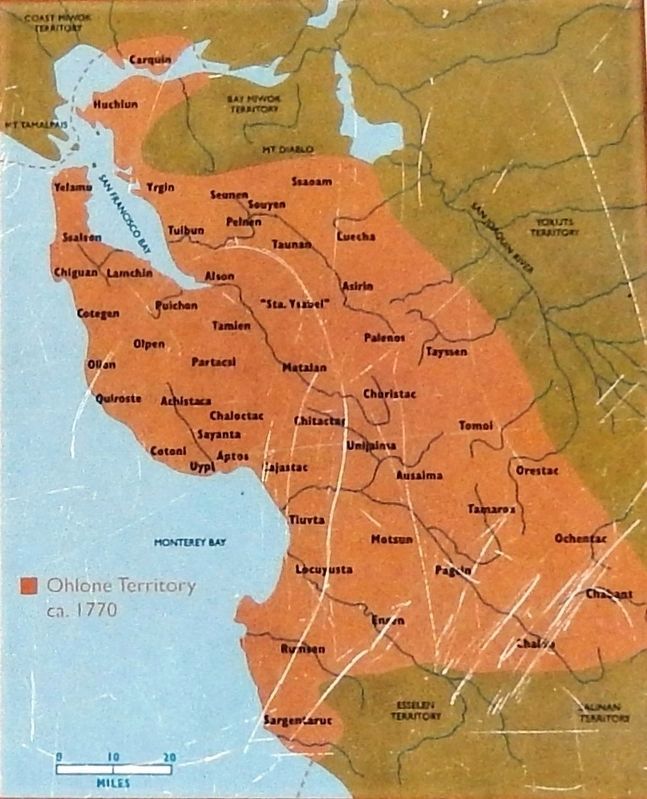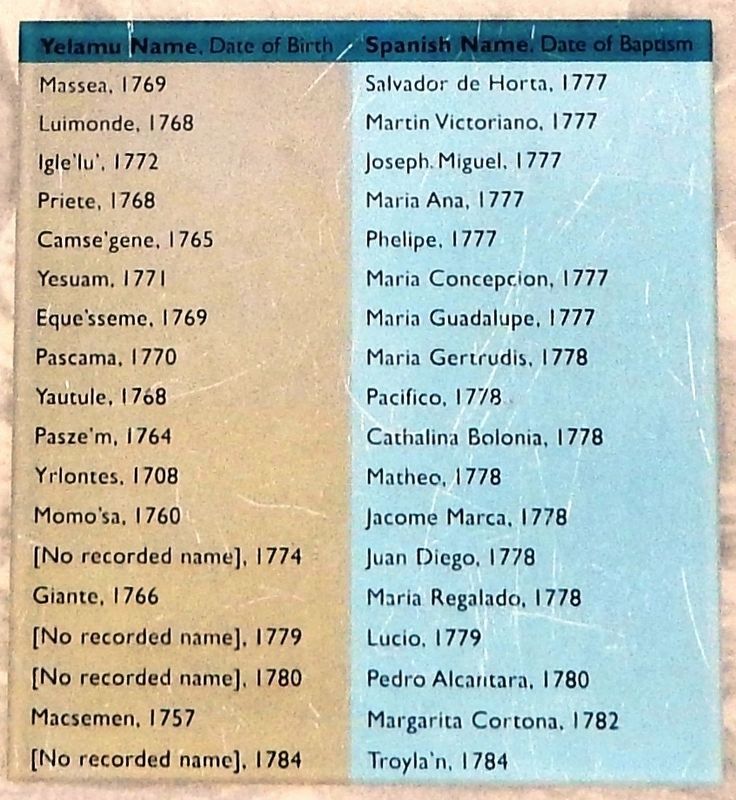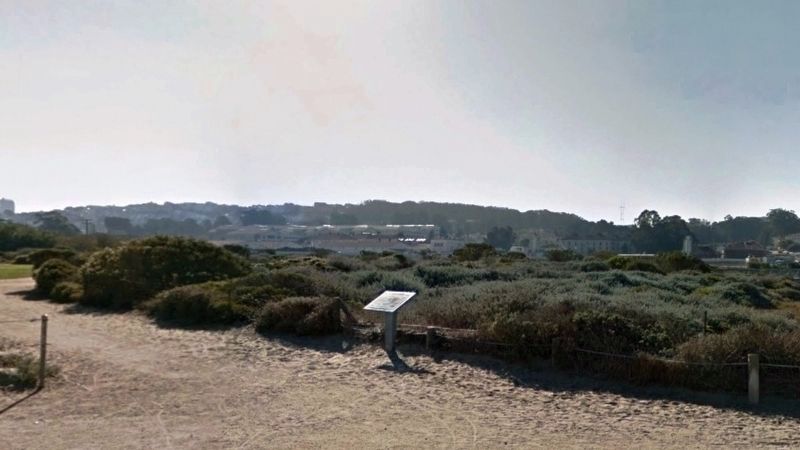Presidio of San Francisco in San Francisco City and County, California — The American West (Pacific Coastal)
Homeland of the Yelamu
The Native People of the Peninsula
The Yelamu were one of 50 independent Ohlone tribes related through culture and language. Ohlone peoples have lived in the Bay Area for several thousand years. The Yelamu, whose territory included today's Crissy Field, moved seasonally from the winter villages of Tubsinte, Sitlintac, and Petlenuc to the summer/fall villages of Chutchui and Amuctac. Archeological study of remains found at Crissy Field indicates the Yelamu lived here when plants, fish and other animals were available for harvest.
The Legacy of Conquest
"I am very old… my people were once around me like the sands of the shore… many… many. They have all passed away. They have died like the grass… they have gone to the mountains. I do not complain, the antelope falls with the arrow. I had a son. I loved him. When the palefaces came he went away. I do not know where he is. I am a Christian Indian, I am all that is left of my people. I am alone."
-Pedro Alcantara, the last known Yelamu, born in 1780, from an interview recorded by Indian Agent Adam Johnston in 1850, the year California became a state.
”We Are Still Here”
The Yelamu population, around 200 at the time Spanish colonists arrived in the 1770s, was among the smallest of all Ohlone tribes. The disruptions wrought by European colonoization decimated the Yelamu. Although we know of no Yelamu descendants living today, several Ohlone tribal groups and many individuals from the broader Ohlone population make up a vital contemporary native community. Ohlone people have played an active role in the Crissy Field restoration project.
(marker photo captions – lower right corner)
• Crissy Field tidal marsh opening, November 1999
• Ohlone representatives signed an agreement with the National Park Service concerning the preservation and interpretation of Ohlone culture.
Topics. This historical marker is listed in these topic lists: Colonial Era • Native Americans.
Location. 37° 48.332′ N, 122° 27.211′ W. Marker is in San Francisco, California, in San Francisco City and County. It is in Presidio of San Francisco. Marker can be reached from the intersection of Mason Street and Halleck Street. Marker is located on the Crissy Field grounds, beside the walkway, near Crissy Field East Beach, about 2/10 north of Mason Street. Touch for map. Marker is in this post office area: San Francisco CA 94129, United States of America. Touch for directions.
Other nearby markers. At least 8 other markers are within walking distance of this marker. Wetlands Renaissance (about 400 feet away, measured in a direct line); From Post to Park (approx. ¼ mile away); Lincoln Beachey (approx. 0.3 miles away); The PPIE Experience (approx. 0.3 miles away); Old and New: Presidio Fire Station (approx. 0.3 miles away); Western Defense Command Headquarters (approx. 0.3 miles away); Bringing A Creek Back to Life: Thompson Reach (approx. 0.3 miles away); First Women in the Army: U.S. Army Nurse Corps (approx. 0.3 miles away). Touch for a list and map of all markers in San Francisco.
Regarding Homeland of the Yelamu. (from bottom right corner of marker) This exhibit was prepared in collaboration with the Ohlone community. “Ohlone” is a native term used by many tribes and individuals today. Some local tribes, individuals, anthropologists and linguists use the term “Costanoan,” which was originally applied to this cultural group by the Spanish.
Also see . . .
1. Searching for the Yelamu in San Francisco. The Yelamu were made up of one or two dozen related families, with each family averaging 15 members. They lived in a non-hierarchical
way, but that did not mean they exalted individuality. For them, as for all California Indians, the individual was nothing, the family and the group everything.
The Yelamu did not practice agriculture, but they were expert hunters and knew every edible and medicinal plant that grew within the boundaries of their little world. Their practices allowed them to survive for millennia, without doing major damage to the earth. (Submitted on March 17, 2019, by Cosmos Mariner of Cape Canaveral, Florida.)
2. Yelamu Villages (Wikipedia). The largest of the three San Francisco groups had its winter village at Tubsinthe, near Candlestick Point and its summer home at Amuctac in Visitacion Valley. The second group moved between their summer camp at Chutchui village located along Mission Creek in the Mission and Sitlintac on the edge of Mission Bay that was filled in during the 19th century. The third community lived near Crissy Field at Petlenuc. (Submitted on March 17, 2019, by Cosmos Mariner of Cape Canaveral, Florida.)
Credits. This page was last revised on February 7, 2023. It was originally submitted on March 17, 2019, by Cosmos Mariner of Cape Canaveral, Florida. This page has been viewed 444 times since then and 24 times this year. Photos: 1, 2, 3, 4. submitted on March 17, 2019, by Cosmos Mariner of Cape Canaveral, Florida.



